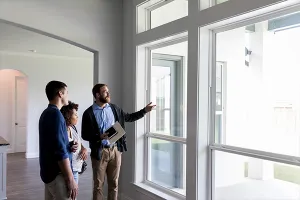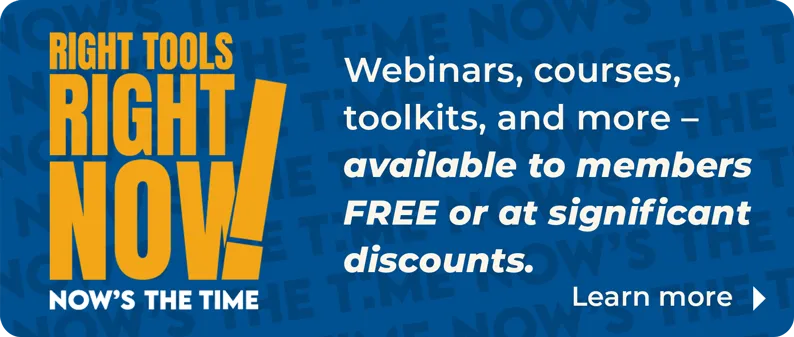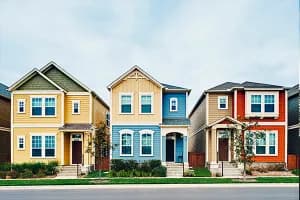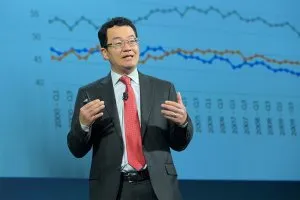
For homeowners, the news is good: Even as the market stays cool, prices continue heating up, leading to solid gains in appreciation.
But buyers are trekking cautiously: Existing home sales—completed transactions for single-family homes, townhomes, condos and co-op—fell 2.7% in June, matching last year’s historically sluggish sales, the National Association of REALTORS® reported Wednesday.
Home Prices Continue Upward March
The median price in June was up 2% compared to a year ago. Nationally, home prices climbed to $435,300—the highest ever recorded for the month of June, NAR reports.
“The record high median home price highlights how American homeowners’ wealth continues to grow—a benefit of homeownership,” says Lawrence Yun, NAR’s chief economist.
Over the last five years, the average homeowner’s wealth has increased by $140,900, Yun says. Research also shows a growing wealth gap between owners and renters: Based on the latest Federal Reserve Survey of Consumer Finance, Yun projected in March that homeowners’ median net worth would reach $430,000 in 2025 versus $10,000 for renters.
Impact on Affordability
“Multiple years of undersupply is driving the record-high home prices,” Yun says, and “home construction continues to lag population growth.” That has led to a prolonged seller’s market but has proven problematic for buyers—with rising prices and elevated mortgage rates pressing on housing affordability. The result: Sales continue to hover near 30-year lows.
“This is holding back first-time home buyers from entering the market,” Yun says. First-time buyers comprised 30% of existing-home sales in June, still below their 40% norm. Even though some markets appear to have a temporary oversupply at the moment, Yun notes, “more supply is needed to increase the share of first-time home buyers in the coming years.”
Housing inventories have made gains over the last year—up about 16% in June compared to a year earlier, NAR reports. But even with rising supplies—even more notable in some metro areas than others—the increase is still mostly falling short of housing needs. (Read more: Solving Housing’s Shortfall.) The shortage of properties for those in the low- to middle-income range will continue to keep home prices higher, NAR economists say.
Twenty-one percent of existing homes sold in June went for more than the list price, down from 29% a year ago, according to the latest REALTORS® Confidence Index report. Real estate pros who are REALTORS® report that about 60% of properties sold in less than a month.
Buyers Remain Jittery
Catching most of the blame for this summer’s sluggish sales: Mortgage rates.
“High mortgage rates are causing home sales to remain stuck at cyclical lows,” Yun says. The 30-year fixed-rate mortgage has been averaging in the mid- to high 6% range over recent weeks.
But if mortgage rates dropped to 6%, the median-priced home would become affordable for about 5.5 million more households—including 1.6 million renters, a recent NAR analysis found. Yun recently presented the findings at last week’s Real Estate Forecast Summit, while unveiling a members-only Metro Market Statistics Dashboard that gives real estate pros metro-level data on housing affordability, economic trends, home price trends and more.
Economists largely predict that the Federal Reserve will do a series of rate cuts this year, which Yun is hopeful will help bring mortgage rates down—and then jump-start home sales.
“If mortgage rates decrease in the second half of this year, expect home sales to increase across the country due to strong economic growth, healthy inventory and a record-high number of jobs,” Yun says. (Read more: What Mortgage Rates Will Get Buyers Moving?)
Bypassing a Mortgage
In the meantime, the housing market is performing strongly among buyers who don’t need a mortgage. In June, nearly 30% of existing-home sales were all-cash transactions, a historically high share, NAR’s data shows.
But cash purchases weren’t driven primarily by investors, who typically make up a large portion of all-cash purchases. Individual investor activity is at its lowest level since 2022, as many continue to pull back from the market. Instead, a growing number of homeowners are using the equity from a previous home sale to finance their next purchase outright. NAR data shows that about one-third of repeat buyers are paying all-cash for an existing home.
Regional Breakdown
Here’s a closer look at how existing-home sales fared across the country in June:
- Northeast: Existing-home sales fell 8% in June compared to May, reaching a seasonally adjusted annual rate of 460,000. Sales were down 4.2% from a year ago. Median price: $543,300, up 4.2% from June 2024.
- Midwest: Sales fell 4% month-over-month, settling in at an annual rate of 950,000. Sales were up 2.2% from a year ago. Median price: $337,600, up 3.4% from a year earlier.
- South: Existing-home sales dropped 2.2% compared to May, reaching an annual rate of 1.81 million. Sales were up 1.7% from a year ago. Median price: $374,500, up 0.3% from June 2024.
- West: Sales rose 1.4% in June compared to May, reaching an annual rate of 710,000. Sales, however, were down 4.1% compared to June 2024. Median price: $636,100, up 1% from a year ago.










